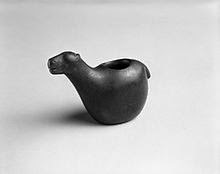AMERICAN CIVILIZATION INCA
Sunday, 3 May 2015
INCA CIVILIZATION
HISTORY :
Incan empire a part of the American
civilization was located in cuzco or peru, they were skilled architects and
were great artists also.
They referred their empire
as ‘Tawantinsuyu’
which means ‘Land of four quarters’ or ‘The four parts together’ and inca’s ruled between 1400 and 1533 CE.
OVERVIEW OF INCA CIVILIZATION
INCA RELIGION :
The Inca had great reverence for two earlier civilizations who had occupied much the same territory - the Wari and Tiwanaku. As we have seen, the sites of Tiwanaku and Lake Titicaca played an important part in Inca creation myths and so were especially revered. Inca rulers made regular pilgrimages to Tiwanaku and the islands of the lake, where two shrines were built to Inti the Sun god and supreme Inca deity, and the moon goddess Mama Kilya. Also in the Coricancha complex at Cuzco, these deities were represented by large precious metal artworks which were attended and worshipped by priests and priestesses led by the second most important person after the king: the High Priest of the Sun (Willaq Umu). Processions and ceremonies could also be connected to agriculture, especially the planting and harvesting seasons.Thus, the religion of the Inca was preoccupied with controlling the natural world and avoiding such disasters as earthquake, floods, and drought, which inevitably brought about the natural cycle of change, the turning over of time involving death and renewal which the Inca called pachakuti.
Inca religious rituals also involved ancestor worship as seen through the practice of mummification and making offerings to the gods of food, drink, and precious materials. Sacrifices - both animals and humans, including children - were also made to pacify and honour the gods and ensure the good health of the king. The pouring of libations, either water or chicha beer, was also an important part of Inca religious ceremonies.
INCA ARCHITECTURE & ROADS :
Master stone masons, the Incas constructed large buildings, walls and fortifications using finely-worked blocks - either regular or polygonal - which fitted together so precisely no mortar was needed. With an emphasis on clean lines, trapezoid shapes, and incorporating natural features into these buildings, they have easily withstood the powerful earthquakes which frequently hit the region. The distinctive sloping trapezoid form and fine masonry of Inca buildings were, besides their obvious aesthetic value, also used as a recognisable symbol of Inca domination throughout the empire.
Goods were transported across the empire along purpose-built roads using llamas and porters (there were no wheeled vehicles). The Inca road network covered over 40,000 km and as well as allowing for the easy movement of armies, administrators, and trade goods, it was also a very powerful visual symbol of Inca authority over their empire. The roads had rest stations along their way, and there was also a relay system of runners (chasquis) who carried messages up to 240 km in a single day from one settlement to another.
INCA ART :
| ANCIENT RULER ATAHUALPA |
Although influenced by the art and techniques of the Chimú, the Incas did create their own distinctive style which was an instantly recognisable symbol of imperial dominance across the empire. Inca art is best seen in highly polished metalwork (in gold - considered the sweat of the sun, silver - considered the tears of the moon, and copper), ceramics, and textiles, with the last being considered the most prestigious by the Incas themselves. Designs often use geometrical shapes, are technically accomplished, and standardized. The checkerboard stands out as a very popular design. One of the reasons for repeated designs was that pottery and textiles were often produced for the state as a tax, and so artworks were representative of specific communities and their cultural heritage. Just as today coins and stamps reflect a nation's history, so, too, Andean artwork offered recognisable motifs which either represented the specific communities making them or the imposed designs of the ruling Inca class ordering them.
Works using precious metals such as discs, jewellery, figures, and everyday objects were made exclusively for Inca nobles, and even some textiles were restricted for their use alone. Goods made using the super-soft vicuña wool were similarly restricted, and only the Inca ruler could own vicuña herds. Ceramics were for wider use, and the most common shape was the urpu, a bulbous vessel with a long neck and two small handles low on the pot which was used for storing maize. It is notable that the pottery decoration, textiles, and architectural sculpture of the Incas did not usually include representations of themselves, their rituals, or such common Andean images as monsters and half-human, half-animal figures.
The Inca produced textiles, ceramics, and metal sculpture technically superior to any previous Andean culture, and this despite stiff competition from such masters of metal work as the expert craftsmen of the Moche civilization.
Subscribe to:
Posts (Atom)







